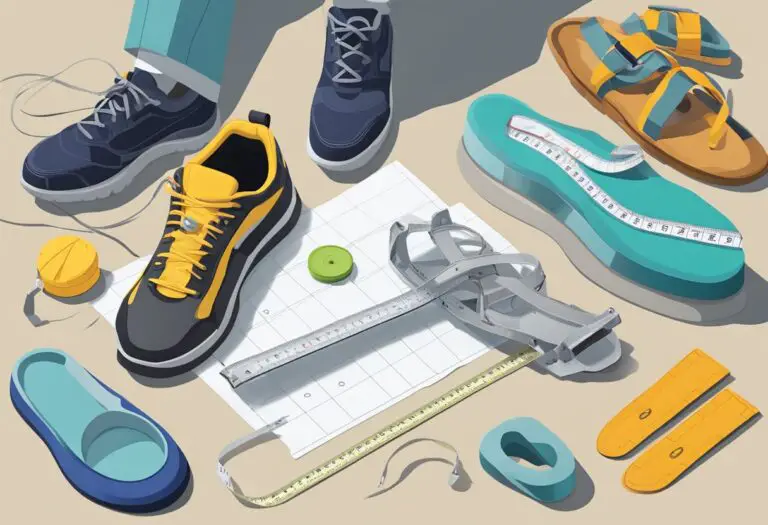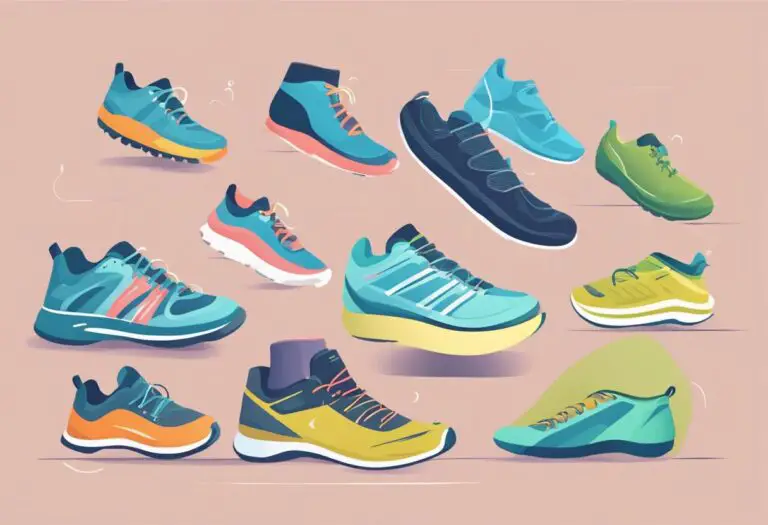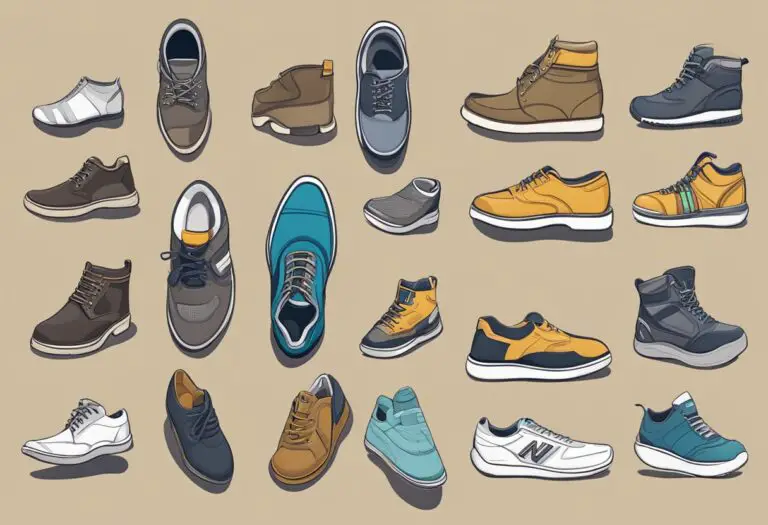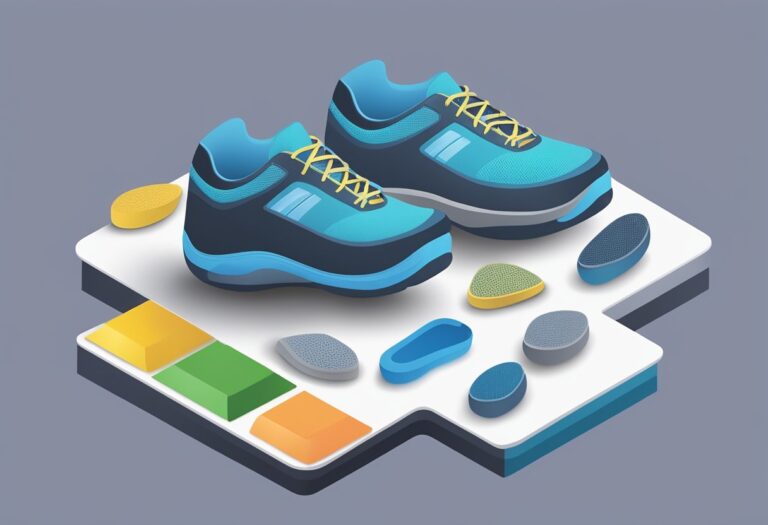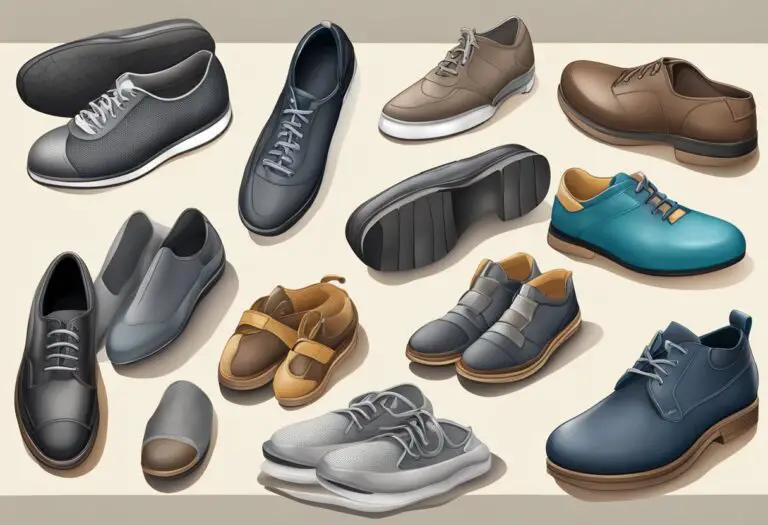What are the key features to look for when selecting shoes for specific weather conditions?
Key Features to Consider When Choosing Shoes for Different Weather Conditions
When it comes to selecting shoes for specific weather conditions, there are a few key features that one should keep in mind. The right shoes can make all the difference in keeping your feet comfortable and protected from the elements. Whether you’re facing rain, snow, or extreme heat, there are certain factors to consider when choosing the right footwear.

One important feature to look for is the shoe’s material. For rainy or wet conditions, waterproof or water-resistant materials are essential to keep your feet dry. In colder weather, materials like leather or suede can provide insulation to keep your feet warm. For hot weather, breathable materials like mesh or canvas can help keep your feet cool and prevent sweating.
Another important factor to consider is the shoe’s sole. For slippery or icy conditions, shoes with a good grip and traction are crucial to prevent slips and falls. In wet conditions, shoes with a non-slip sole can also help keep you steady on your feet. In hot weather, shoes with a flexible and lightweight sole can provide comfort and prevent fatigue. By keeping these key features in mind, you can select shoes that are best suited for the specific weather conditions you’ll be facing.
Understanding Weather-Specific Footwear Requirements

When it comes to selecting shoes for specific weather conditions, it’s important to consider the unique features that each type of weather requires. Understanding the footwear requirements for different weather conditions can help ensure that you choose the right shoes to keep your feet comfortable and protected.
Water Resistance and Waterproofing
One of the most important features to look for in shoes for wet weather is water resistance or waterproofing. Shoes that are water-resistant or waterproof are designed to keep your feet dry, even in heavy rain or snow. Look for shoes with a waterproof or water-resistant membrane, such as Gore-Tex, to ensure that your feet stay dry in wet conditions.
Insulation for Cold Weather
In cold weather, it’s important to choose shoes that provide adequate insulation to keep your feet warm. Look for shoes with a thick, insulated lining, such as Thinsulate, to ensure that your feet stay warm in freezing temperatures. Shoes with a high ankle collar can also help keep cold air from getting in and keep your feet warmer.
Breathability for Warm Climates
In warm climates, it’s important to choose shoes that are breathable to help keep your feet cool and dry. Look for shoes with a mesh upper or perforations to allow air to circulate around your feet. Shoes with a moisture-wicking lining can also help keep your feet dry and comfortable in hot, humid conditions.
By considering these weather-specific footwear requirements, you can choose shoes that are tailored to your specific needs and keep your feet comfortable and protected in any weather condition.
Material Considerations for Durability and Comfort

When selecting shoes for specific weather conditions, one of the most important factors to consider is the material of the shoe. The material can greatly affect the durability and comfort of the shoe, which are crucial for any outdoor activity.
Leather vs Synthetic Materials
Leather is a popular material for shoes due to its durability and classic look. It is also naturally water-resistant, making it a good option for rainy or snowy weather. However, leather can be heavy and may not provide as much breathability as synthetic materials.
Synthetic materials, on the other hand, are often lightweight and breathable, making them a good choice for warm weather. They can also be made to be water-resistant or waterproof, making them suitable for rainy or snowy conditions. However, synthetic materials may not be as durable as leather and may wear out more quickly.
Mesh Fabrics and Ventilation Features
Mesh fabrics and ventilation features are important for shoes that will be worn in hot or humid weather. These features allow air to circulate around the foot, keeping it cool and dry. Mesh fabrics are lightweight and breathable, making them a popular choice for running shoes.
Ventilation features can include perforations in the shoe upper, breathable linings, or mesh panels. These features can also help to reduce odor by allowing moisture to escape from the shoe.
When selecting shoes for specific weather conditions, it is important to consider the materials used in the shoe. Leather and synthetic materials each have their own advantages and disadvantages, while mesh fabrics and ventilation features can help to keep feet cool and dry in hot or humid weather.
Design and Construction

When selecting shoes for specific weather conditions, it is important to consider the design and construction of the shoe. This includes the materials used, the overall build quality, and the specific features that are included to help protect your feet from the elements.
Sole Traction Patterns
One of the most important design features to consider when selecting shoes for specific weather conditions is the sole traction pattern. This is especially important if you will be walking on wet or slippery surfaces. A good sole traction pattern will provide excellent grip and help prevent slips and falls.
When looking at shoes, be sure to examine the sole carefully. Look for deep, wide grooves that will provide good traction on a variety of surfaces. Shoes with shallow or narrow grooves may not provide enough traction, especially on wet or slippery surfaces.
Supportive Features for Foot Health
Another important aspect of shoe design is the inclusion of supportive features that promote foot health. This is especially important if you will be spending a lot of time on your feet or walking long distances.
Look for shoes that offer good arch support, as this can help prevent foot fatigue and discomfort. Shoes with a cushioned sole can also be beneficial, as they help absorb shock and reduce the impact of each step.
Finally, consider the overall fit of the shoe. Shoes that are too tight or too loose can cause discomfort and lead to foot problems over time. Look for shoes that fit well and provide plenty of support and cushioning.
Fit and Sizing for Different Weather Conditions
When selecting shoes for specific weather conditions, it is important to consider the fit and sizing of the shoes. A proper fit ensures comfort and support, while the right size prevents foot injuries and blisters.
Adjusting for Sock Thickness
In colder weather, thicker socks are often worn to keep feet warm. When selecting shoes for cold weather, it is important to consider the extra space needed to accommodate thicker socks. Shoes that fit snugly with thin socks may become too tight and uncomfortable when worn with thicker socks. Therefore, it is recommended to try on shoes with the socks you plan to wear in the specific weather conditions to ensure a proper fit.
Room for Thermal Expansion in Heat
In hot weather, feet tend to swell due to thermal expansion. Therefore, it is important to select shoes that have enough room to accommodate the expansion of the feet. Shoes that fit too tightly can cause discomfort and even lead to blisters. It is recommended to select shoes with breathable materials and a roomy toe box to allow for thermal expansion.
Overall, selecting shoes that fit properly and accommodate for weather conditions can prevent discomfort and foot injuries.
Maintenance and Care of Weather-Specific Shoes
When it comes to weather-specific shoes, proper maintenance and care are crucial to ensure their longevity and effectiveness. Here are some tips on how to keep your shoes in top condition:
Cleaning Techniques
Cleaning weather-specific shoes is essential to remove dirt, stains, and other debris that can affect their performance. Here are some cleaning techniques to consider:
- Waterproof shoes: Use a damp cloth to wipe away any dirt or debris on the surface. For tougher stains, use a mild soap and water solution. Avoid using harsh chemicals or abrasive materials that can damage the waterproof coating.
- Winter boots: Remove any snow or ice buildup before cleaning. Use a soft-bristled brush to remove dirt and stains. For tougher stains, use a mild soap and water solution. Apply a protective wax or spray to keep the boots waterproof.
- Summer sandals: Use a soft-bristled brush to remove any dirt or debris. For leather sandals, use a leather cleaner and conditioner to keep the leather supple and prevent cracking. For synthetic materials, use a mild soap and water solution.
Storage Solutions
Proper storage is essential to keep weather-specific shoes in good condition. Here are some storage solutions to consider:
- Waterproof shoes: Store in a cool, dry place away from direct sunlight. Stuff the shoes with newspaper or a shoe tree to help them retain their shape. Avoid storing them in a damp or humid environment.
- Winter boots: Store in a cool, dry place away from direct sunlight. Stuff the boots with newspaper or a boot tree to help them retain their shape. Avoid storing them in a damp or humid environment.
- Summer sandals: Store in a cool, dry place away from direct sunlight. Avoid stacking them on top of each other, as this can cause the straps to become misshapen. Consider storing them in a shoe organizer or hanging them on a shoe rack.
By following these maintenance and care tips, you can ensure that your weather-specific shoes remain in top condition and provide you with the protection and comfort you need in any weather condition.


